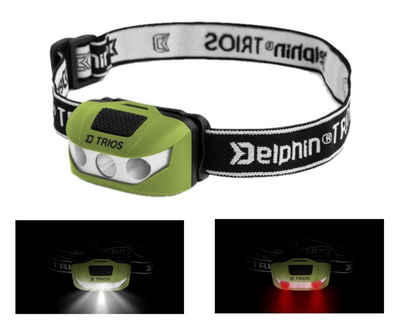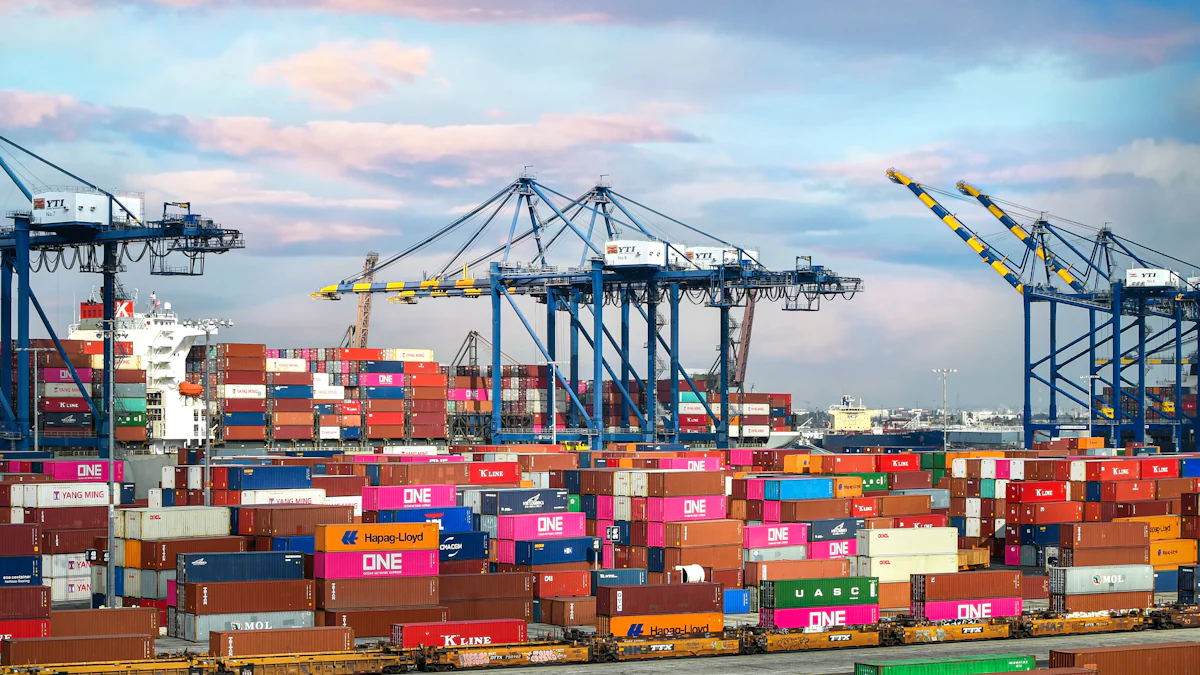How Emerging Technologies Are Shaping the Flashlight Supply Chain

How Emerging Technologies Are Shaping the Flashlight Supply Chain is evident in the remarkable transformations taking place. Artificial intelligence now optimizes logistics and automates inventory management, while Internet of Things (IoT) devices enhance warehouse connectivity, improving safety and asset tracking. The introduction of 5G technology enables seamless real-time data sharing, significantly boosting supply chain visibility. Cloud computing fosters better collaboration by allowing instant material tracking. Additionally, advanced supply chain software integrates these cutting-edge innovations, ensuring businesses remain competitive. These developments clearly illustrate how emerging technologies are shaping the flashlight supply chain, making it more efficient, transparent, and sustainable.
Key Takeaways
New technologies like AI and IoT make flashlight production faster.
Sharing live data helps track inventory and shipments better, cutting delays.
Robots and machines help in warehouses, saving money and reducing mistakes.
Green practices are important, with tech lowering waste and pollution.
Training workers and teaming up with tech companies speeds up progress.
Understanding the Flashlight Supply Chain
The flashlight supply chain involves several interconnected stages that ensure flashlights reach you efficiently. Each stage plays a critical role in delivering high-quality products while addressing challenges like disruption and inefficiencies.
Key Components
Raw Material Sourcing
The supply chain begins with sourcing raw materials like aluminum, plastic, and LED components. Reliable suppliers ensure these materials meet quality standards. You might not realize it, but even small disruptions in sourcing can delay production and delivery.
Manufacturing and Assembly
Once materials are sourced, manufacturers assemble flashlights using advanced machinery. This stage focuses on precision and efficiency. Factories often rely on cloud-based solutions to monitor production lines and maintain visibility and traceability.
Distribution and Logistics
After assembly, flashlights move to distribution centers. Logistics teams coordinate transportation to ensure timely delivery. Cloud technology helps track shipments in real time, reducing delays caused by unexpected disruptions.
Retail and End-User Delivery
Finally, flashlights reach retailers or ship directly to you. Retailers use supply chain management tools to manage inventory and meet customer demand. This stage ensures you receive your flashlight without unnecessary delays.
Challenges in Traditional Supply Chains
Limited Visibility
Traditional supply chains often lack visibility and traceability. Without real-time data, it becomes difficult to track shipments or identify bottlenecks. This lack of transparency can lead to delays and customer dissatisfaction.
Inefficiencies in Logistics
Outdated logistics systems struggle to handle disruptions like weather or traffic. These inefficiencies increase costs and slow down delivery times. You might experience delays when supply chain management tools are not optimized.
Environmental Impact
Traditional supply chains often rely on processes that harm the environment. Excessive packaging, inefficient transportation, and wasteful practices contribute to carbon emissions. Modern solutions like cloud-based systems aim to reduce this impact.
By understanding these components and challenges, you can appreciate how emerging technologies are shaping the flashlight supply chain. These innovations improve visibility and traceability, reduce disruptions, and create more sustainable practices.
Supply Chain Technology Transforming the Flashlight Industry

Artificial Intelligence in Supply Chain
Demand Forecasting and Inventory Optimization
Artificial intelligence in supply chain management has revolutionized how you predict demand and manage inventory. AI processes real-time data to improve demand planning. It uses adaptive learning to enhance forecasting accuracy, ensuring you can anticipate market trends. Unlike traditional methods, AI adjusts forecasts instantly based on current trends and external factors. Integration with inventory systems allows you to respond quickly to changes in demand, reducing overstock or shortages. For example, companies like Aspen Technology and Logiwa use AI to optimize inventory and streamline operations, ensuring efficient supply chain technology.
Enhancing Manufacturing Processes
AI also transforms manufacturing processes. It analyzes production data to identify inefficiencies and improve workflows. Machine learning algorithms predict equipment failures, reducing downtime and maintenance costs. Companies like Uptake and DataArt use AI to monitor machinery and optimize production lines. These advancements ensure that flashlight manufacturing becomes faster and more reliable, helping you receive high-quality products.
Internet of Things (IoT)
Real-Time Shipment Tracking
IoT devices provide real-time shipment tracking, giving you full visibility into shipping operations. These devices monitor shipments and send alerts for delays or risks. IoT enables route optimization, saving time and fuel by identifying the shortest paths. It also enhances shipment safety by providing real-time notifications for high-value items. With IoT, you can enjoy timely updates and improved customer satisfaction.
Smart Sensors in Production
IoT smart sensors play a crucial role in flashlight production. These sensors monitor equipment performance and detect issues early. They ensure consistent quality by tracking environmental conditions like temperature and humidity. This digitization of production processes reduces waste and improves efficiency, making flashlight manufacturing more sustainable.
Blockchain Technology
Improving Transparency and Traceability
Blockchain technology enhances transparency and traceability in supply chains. It creates a secure, tamper-proof record of every transaction. This ensures you can track a flashlight’s journey from raw materials to delivery. Deloitte’s case studies highlight how blockchain improves supply chain workflows, ensuring accountability and trust.
Combating Fraud and Counterfeiting
Blockchain also combats fraud and counterfeiting. It verifies the authenticity of products by recording their origin and movement. This ensures you receive genuine flashlights, protecting you from counterfeit goods. Blockchain’s ability to secure data makes it a valuable tool in modern supply chain technology.
Automation and Robotics
Streamlining Warehouse Operations
Automation and robotics have transformed warehouse operations, making them faster and more efficient. Automated systems reduce processing time by quickly measuring and handling packages. They also maximize space utilization by creating narrower aisles and using vertical storage effectively. This allows you to store more inventory in the same space. Automation improves safety by minimizing human traffic and reducing workplace hazards. It also enhances inventory management by tracking stock levels accurately and adapting to market changes.
Adopting automation leads to long-term savings. Although the initial investment may seem high, companies often report up to 30% savings in operational costs within the first year. Automation also reduces human errors, ensuring fewer misplaced items and incorrect shipments. These improvements strengthen customer satisfaction by speeding up order processing and minimizing mistakes. Additionally, automated systems support sustainability by reducing energy consumption and waste.
Increasing Production Efficiency
Robotics play a vital role in increasing production efficiency. Robots handle repetitive tasks with precision, allowing you to focus on more complex operations. They work tirelessly, ensuring consistent output and reducing downtime. By integrating robotics into production lines, manufacturers can produce flashlights faster and with fewer defects. This agility ensures you receive high-quality products promptly. Robotics also enhance agility and resilience by adapting quickly to changes in demand or production needs.
Big Data and Analytics
Identifying Bottlenecks
Big data and analytics help you identify bottlenecks in the flashlight supply chain. By analyzing operational data, you can pinpoint areas causing delays or inefficiencies. Bottlenecks often lead to recurring losses and missed revenue opportunities. Addressing these issues improves service levels and reduces lead times. For example, big data insights allow operations managers to optimize processes, ensuring smoother workflows. This agility enhances the overall performance of supply chain technology.
Data-Driven Decision-Making
Data-driven decision-making improves the agility and resilience of supply chains. Real-time data monitoring helps you mitigate risks like shipment delays or damage. Analyzing customer behavior and preferences allows you to tailor logistics to meet specific needs. This approach enhances visibility and efficiency, ensuring better collaboration among supply chain partners. It also prevents overstocking and stockouts by providing accurate inventory insights. By leveraging big data and analytics, you can make informed decisions that reduce costs and improve supply chain technology.
Benefits of Emerging Technologies in the Flashlight Supply Chain
Enhanced Efficiency
Faster Production and Delivery
Emerging technologies have significantly improved production and delivery times in the flashlight supply chain. Automation and robotics allow manufacturers to produce flashlights faster by handling repetitive tasks with precision. AI-powered systems optimize workflows, ensuring that production lines operate without delays. These innovations reduce lead times, enabling you to receive products more quickly. Additionally, IoT devices streamline logistics by identifying the fastest delivery routes, ensuring timely shipments.
Lower Operational Costs
Technological advancements reduce operational costs across the supply chain. Automation minimizes labor expenses by performing tasks that previously required manual effort. AI-driven demand forecasting prevents overproduction, saving resources and storage costs. Smart sensors in production lines detect inefficiencies early, reducing waste and maintenance expenses. These cost-saving measures enhance operational efficiency, making flashlights more affordable for you.
Improved Visibility
Real-Time Data Sharing
Real-time data sharing transforms supply chain management by providing detailed insights into stock levels and movement. IoT-enabled devices monitor inventory in real time, ensuring you always know what is available and where it is located. This transparency helps businesses avoid overstocking or running out of essential components. With better visibility, you can trust that your flashlight orders will be fulfilled accurately and on time.
Better Inventory Control
Advanced technologies improve inventory control by integrating data from multiple sources. AI analyzes inventory trends, helping businesses maintain optimal stock levels. IoT sensors track product conditions during storage, ensuring quality is preserved. These tools allow you to benefit from a more reliable and efficient supply chain. By reducing errors and delays, businesses can meet your expectations more effectively.
Sustainability Improvements
Reducing Waste
Sustainability is a growing priority in the flashlight supply chain. Automation and AI reduce waste by optimizing production processes and minimizing material usage. Smart sensors monitor equipment performance, preventing unnecessary resource consumption. These sustainable practices ensure that fewer materials are wasted, contributing to a greener and circular supply chain.
Lowering Carbon Emissions
Technological innovations also help lower carbon emissions. IoT devices optimize transportation routes, reducing fuel consumption. Automation in warehouses decreases energy usage by streamlining operations. By adopting green and circular supply chains, businesses can reduce their environmental impact. These efforts align with sustainability goals, ensuring that the flashlight industry becomes more eco-friendly.
Challenges of Adopting Emerging Technologies
Financial Barriers
High Initial Investment
Adopting emerging technologies often requires significant upfront investment. Purchasing advanced equipment, implementing IoT devices, or integrating AI systems can strain budgets. Smaller businesses may find these costs particularly challenging. For example, automation and robotics demand not only the initial purchase but also ongoing maintenance. These expenses can delay adoption, especially for companies with limited resources. However, long-term savings from reduced labor costs and increased efficiency often outweigh the initial financial burden.
Balancing Costs and ROI
Balancing costs with return on investment (ROI) presents another challenge. You may hesitate to invest in technologies without clear, immediate benefits. Emerging technologies like blockchain or big data analytics require time to demonstrate measurable ROI. Businesses must develop risk management strategies to evaluate potential gains against costs. This approach ensures that investments align with long-term goals while maintaining financial stability.
Cybersecurity Risks
Protecting Supply Chain Data
Emerging technologies increase the risk of cyber threats. Supply chain data becomes a target for hackers, leading to potential breaches or disruptions. Common risks include:
Third-party vulnerabilities
Phishing attacks and social engineering
Data breaches
Ransomware attacks
Supply chain disruptions
To protect data, businesses should:
Limit the number of suppliers to manage risk effectively.
Develop minimum cyber standards for suppliers and include them in contracts.
Regularly monitor suppliers' adherence to these standards.
Share information on improving data security with suppliers.
Encourage open reporting of potential issues.
Additionally, implementing secure access controls, encryption, and real-time monitoring can strengthen supply chain resilience.
Addressing IoT Vulnerabilities
IoT devices enhance efficiency but also introduce vulnerabilities. Hackers can exploit weak points in connected systems, causing disruptions. Regular patch management and cybersecurity training help mitigate these risks. Collaboration among supply chain partners ensures a unified approach to risk management strategies.
Organizational Resistance
Overcoming Resistance to Change
Resistance to change often slows the adoption of new technologies. Employees may fear job loss or struggle to adapt to unfamiliar systems. Transparent communication can ease these concerns. Highlighting the strategic need for change and personal benefits, such as an average salary increase of 8.6%, can motivate employees. Leadership modeling also plays a crucial role. When leaders actively participate in training, engagement improves significantly.
Workforce Training and Upskilling
Training and upskilling are essential for overcoming resistance. Offering tangible incentives, like learning opportunities, appeals to 93% of Millennial and Gen Z workers. This approach not only improves retention but also builds a skilled workforce. Training programs should focus on practical applications, ensuring employees feel confident using new technologies. By investing in your team, you can foster a culture of innovation and adaptability.
The Future of the Flashlight Supply Chain

Key Trends
Growing Use of AI and IoT
AI and IoT are shaping the future of the flashlight supply chain by enabling smarter and more efficient operations. AI-powered platforms analyze data to improve decision-making and risk management. This integration enhances real-time monitoring of shipments, inventory, and production schedules. You can expect supply chains to become more autonomous and sustainable as these technologies evolve. IoT devices also provide real-time analytics, helping businesses adapt to market changes and maintain operational efficiency. These advancements ensure that flashlights reach you faster and with fewer disruptions.
Other trends include the growing demand for customized flashlight solutions tailored to specific industries like healthcare and automotive. Emerging markets are also driving adoption rates due to regional growth catalysts. Additionally, the need for supply chain resilience and transparency has become critical. Businesses now prioritize visibility and proactive adjustments to meet post-pandemic challenges.
Emphasis on Sustainability
Sustainability is no longer optional in the flashlight industry. Companies are adopting green practices to reduce waste and carbon emissions. IoT devices optimize transportation routes, cutting fuel consumption. Automation minimizes material usage during production. These efforts align with global sustainability goals, ensuring that the flashlight supply chain becomes more eco-friendly. Cost-reduction imperatives also push businesses to adopt sustainable practices, enhancing efficiency while lowering operational expenses.
Actionable Insights
Embrace Digital Transformation
To stay competitive, you must embrace digital transformations in the flashlight supply chain. Start by investing in staff training to equip your team with the skills needed for new technologies. Foster a culture of innovation and agility to adapt to market changes. Refine your KPIs to measure the benefits of digitalization. Streamline operations to eliminate bottlenecks and reduce costs. Assess and adopt technologies like AI, Blockchain, and IoT to enhance efficiency and visibility. Clear communication of your vision ensures that employees understand the value of these changes.
Partner with Technology Providers
Collaborating with technology providers accelerates your transformation journey. These partnerships give you access to cutting-edge tools and expertise. Providers can help you implement AI-driven platforms, IoT devices, and automation systems tailored to your needs. Regular collaboration ensures that your supply chain remains agile and resilient. By leveraging these partnerships, you can focus on delivering high-quality flashlights to your customers while staying ahead of industry trends.
Emerging technologies are transforming the flashlight supply chain. You can see improvements in efficiency, visibility, and sustainability. These advancements make production faster, reduce waste, and enhance transparency. Businesses adopting these innovations gain a competitive edge by staying ahead of market demands. While challenges like cost and cybersecurity exist, the benefits outweigh the risks. As you explore how emerging technologies are shaping the flashlight supply chain, it becomes clear that the future holds exciting possibilities. Continuous advancements will ensure a brighter and more efficient supply chain for years to come.
FAQ
What is the role of AI in the flashlight supply chain?
AI helps you predict demand, optimize inventory, and improve production efficiency. It analyzes real-time data to identify trends and prevent disruptions. By automating repetitive tasks, AI ensures faster delivery and reduces costs, making the supply chain more reliable.
How does IoT improve supply chain visibility?
IoT devices track shipments and monitor inventory in real time. They provide updates on location, condition, and potential delays. This transparency allows you to make informed decisions, ensuring products reach their destination on time and in good condition.
Why is blockchain important for flashlight supply chains?
Blockchain ensures transparency by creating tamper-proof records of transactions. It helps you trace a flashlight’s journey from raw materials to delivery. This technology also combats counterfeiting, ensuring you receive authentic products while building trust in the supply chain.
What are the main challenges of adopting new technologies?
High initial costs, cybersecurity risks, and resistance to change are common challenges. You may need to invest in training and infrastructure. Protecting data and addressing vulnerabilities in IoT systems also require careful planning and collaboration.
How do emerging technologies support sustainability?
Automation and AI reduce waste by optimizing production processes. IoT devices improve transportation efficiency, lowering fuel consumption. These innovations help you minimize environmental impact while meeting sustainability goals, creating a greener supply chain.
See Also
Exploring Future Trends in Flashlight Demand Across Markets
Assessing Important Factors and Trends in Flashlight Suppliers
Comprehensive 2024 Overview of the Flashlight Industry in America
An Insider's Look at Flashlight Production and Quality in China
Understanding Flashlight Manufacturing Techniques and LED Innovations
